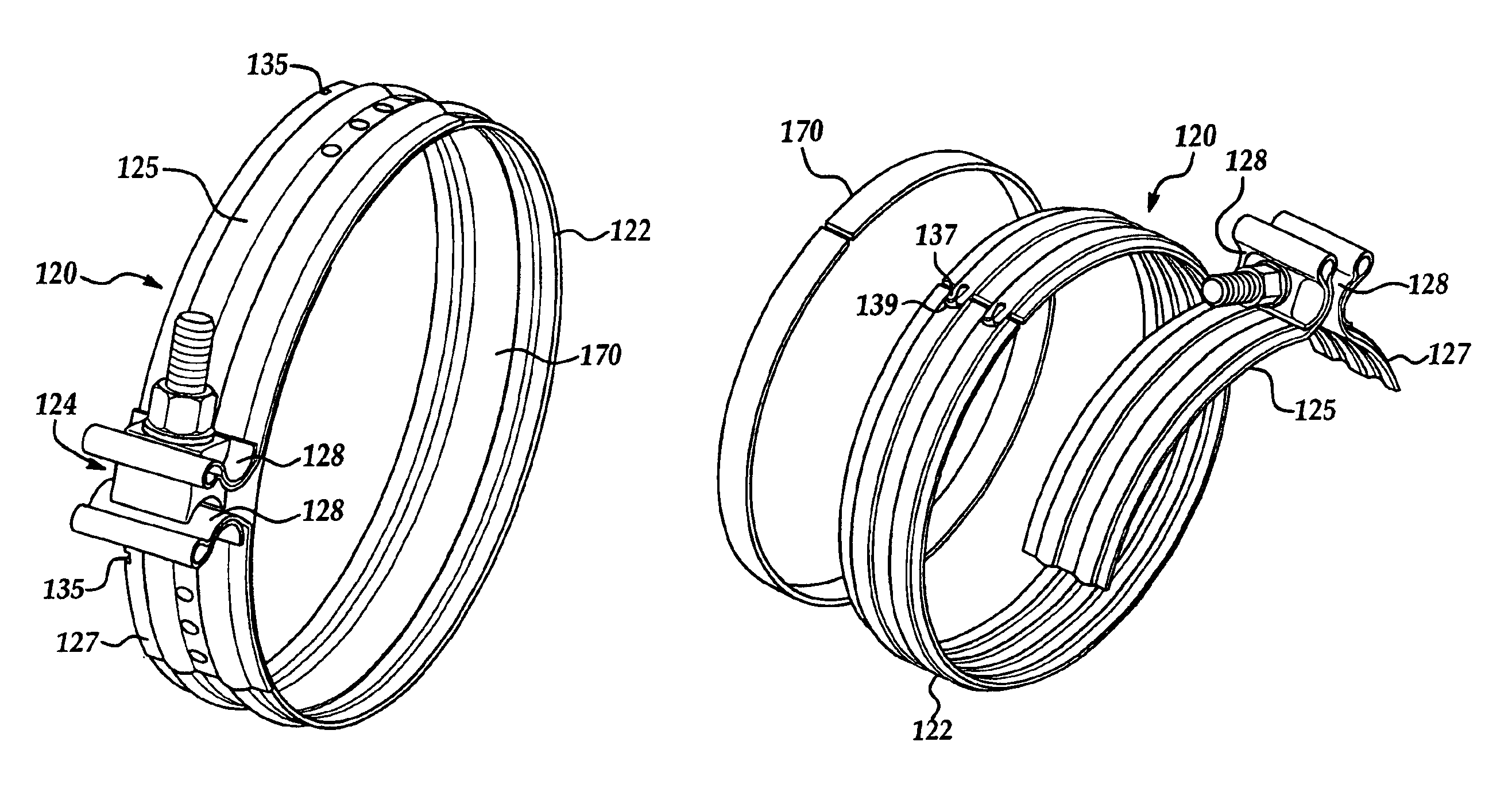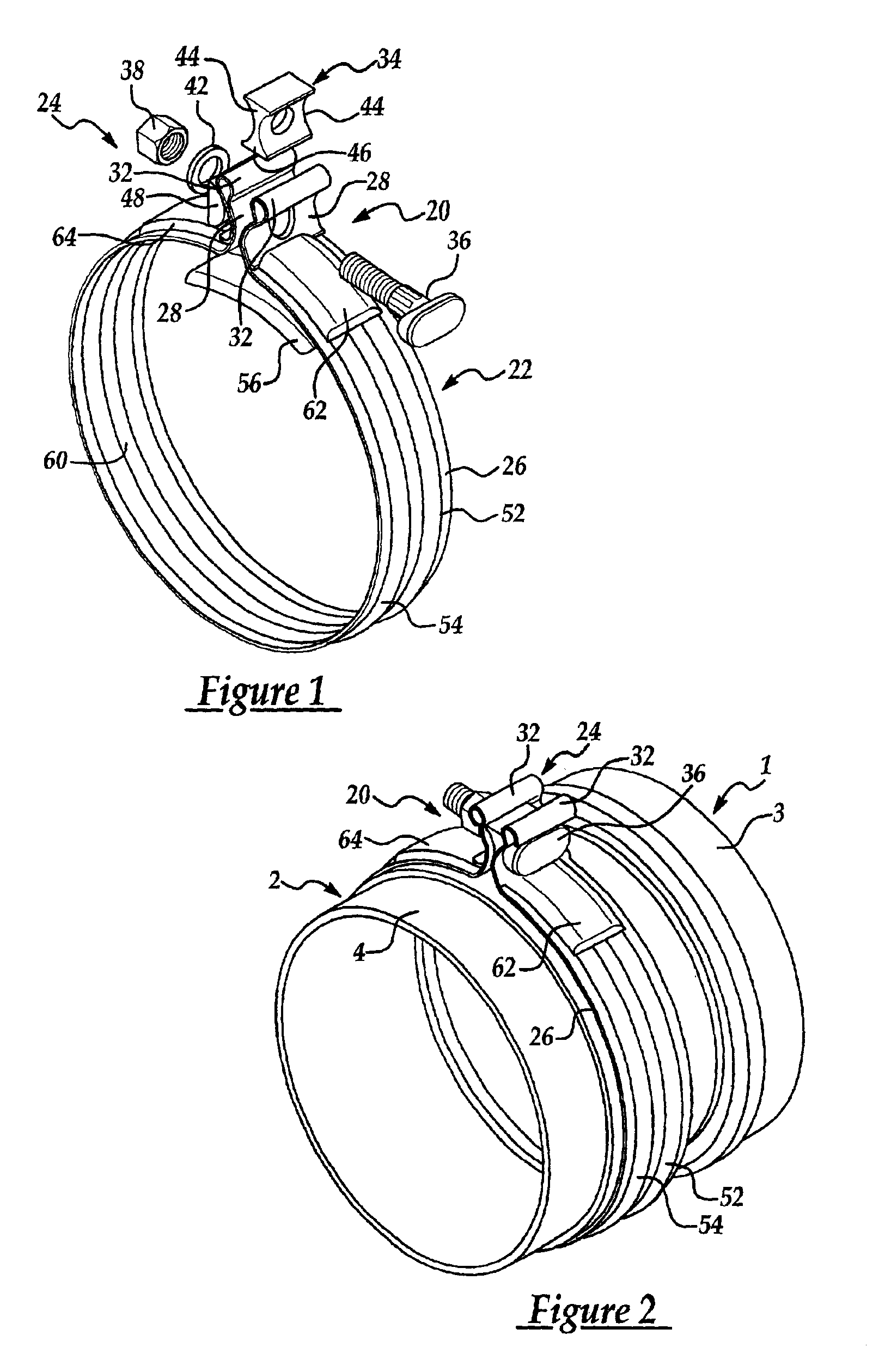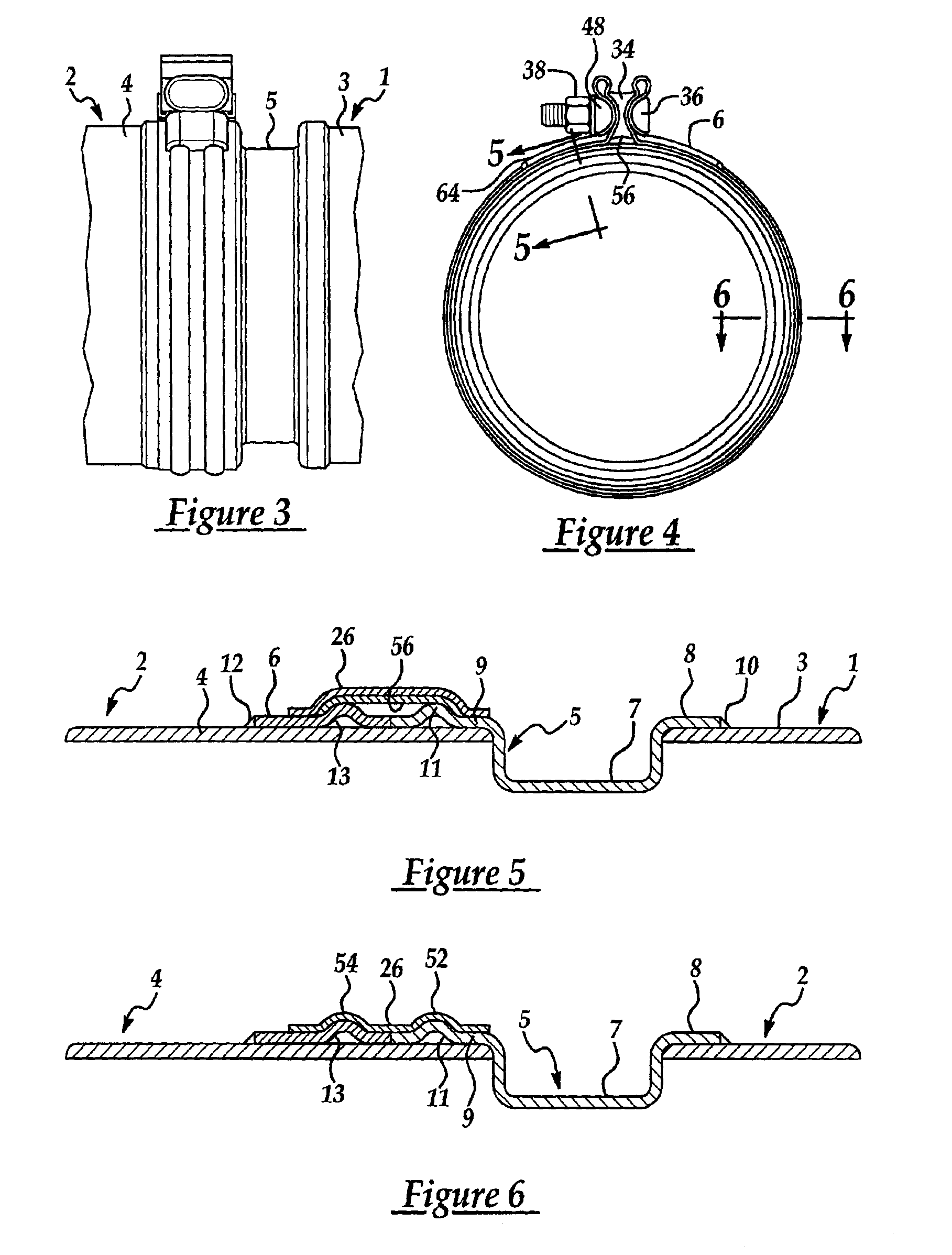Clamp for joining tubular bodies
a tubular body and band clamp technology, applied in the direction of sleeves/socket joints, mechanical equipment, machines/engines, etc., can solve problems such as discontinuous steps, and achieve the effect of good sealing and high pull-apart strength
- Summary
- Abstract
- Description
- Claims
- Application Information
AI Technical Summary
Benefits of technology
Problems solved by technology
Method used
Image
Examples
first embodiment
of this Invention
The first embodiment of the band clamp and clamping assembly of this invention will be described with reference to FIGS. 1-6. The band clamp 20 comprises, in general, a clamp band 22 and a clamp tightening mechanism 24. The band 22 comprises a clamp sleeve 26 that is formed as a roundish-shaped sector which defines a circumferential loop. The band 22 has first and second ends which in this embodiment are located at a pair of confronting end flanges 28 that extend radially from the band and are unitary therewith. The end flanges 28 serve as parts of the clamp tightening mechanism 24. Each end flange 28 terminates at its outer end in a retainer bight 32 which is formed by folding the end of the flange on itself to provide a double layer of sheet metal. These folded end flanges 28 comprise clamping members that, when drawn together, pull the first and second ends of the band toward each other to thereby tighten the band clamp.
The clamp tightening mechanism 24 comprises...
second embodiment
of this Invention
Turning now to FIGS. 15-17, a second embodiment of a band clamp of this invention is shown which can be used in conjunction with the adapters 5 and 6 shown in FIGS. 1-6 or with components having unitary ribs, such as shown in FIGS. 13-14. Elements of this embodiment that correspond functionally to similar elements of the first embodiment are identified with numerals offset by 100 from those used in the first embodiment. Some of these components can be constructed identically to the corresponding components from the first embodiment such as, for example, the tightening mechanism.
Thus, band clamp 120 of FIGS. 15-17 include a band 122 and tightening mechanism 124. Whereas the clamp members 28 of the first embodiment are unitary extensions of the band 22 itself, the clamp members 128 of this second embodiment are formed as confronting portions of a pair of strap sections 125 and 127 that are attached to band 122 by three spot welds each. This enables band 122 to form a ...
third embodiment
of this Invention
The third embodiment of this invention can be implemented the same as in the first or second embodiments except for the structure of the annular ribs. In the third embodiment shown in FIG. 18, the ribs 190 on the band 192 of the band clamp 194 are concave in cross-section with reference to the outer surface of the clamp sleeve instead of being convex as in the first two embodiments. Likewise, the annular ribs on the components being joined (such as the catalytic converter and particulate filter) are concave with respect to the outer surface. Otherwise the structure of the clamp band is the same as that of the first two embodiments of this invention.
The first three embodiments discussed above have involved the joining of tubular bodies or adapters having abutting ends. As shown in FIGS. 19-22, the band clamp of this invention can be used for lap joints as well. As in the first embodiments, it will be noted that, where a gasket 270 or 280 is used, it is located at the...
PUM
 Login to View More
Login to View More Abstract
Description
Claims
Application Information
 Login to View More
Login to View More - R&D
- Intellectual Property
- Life Sciences
- Materials
- Tech Scout
- Unparalleled Data Quality
- Higher Quality Content
- 60% Fewer Hallucinations
Browse by: Latest US Patents, China's latest patents, Technical Efficacy Thesaurus, Application Domain, Technology Topic, Popular Technical Reports.
© 2025 PatSnap. All rights reserved.Legal|Privacy policy|Modern Slavery Act Transparency Statement|Sitemap|About US| Contact US: help@patsnap.com



